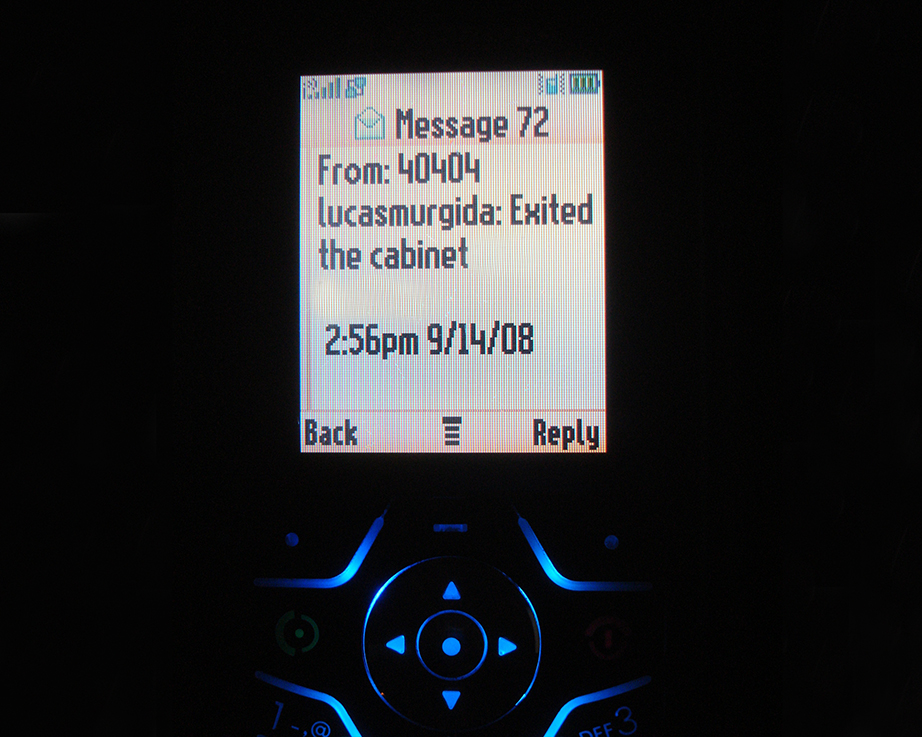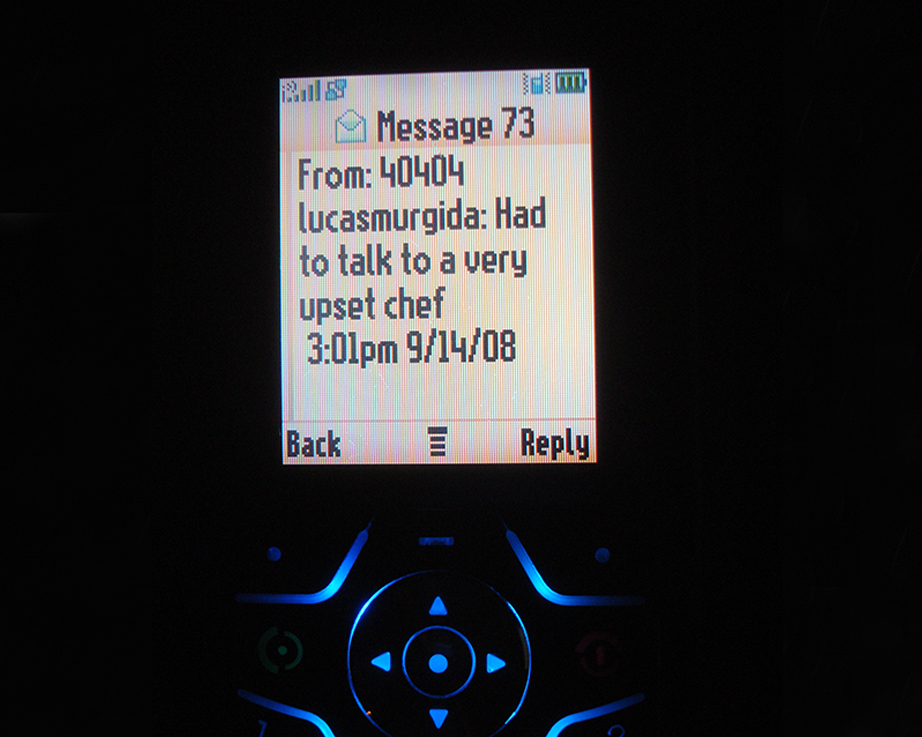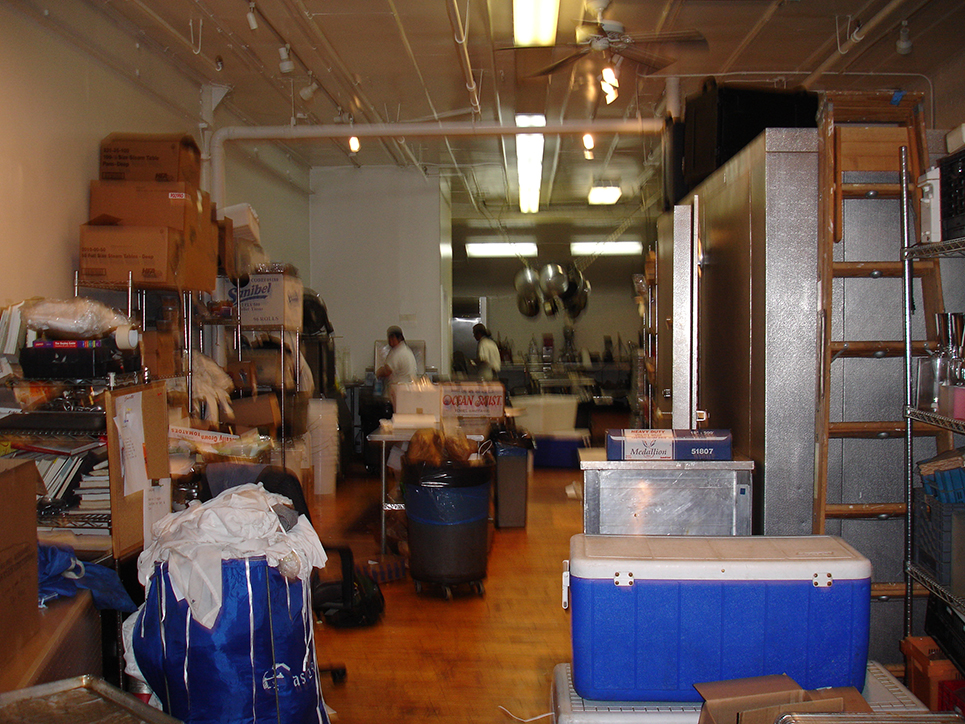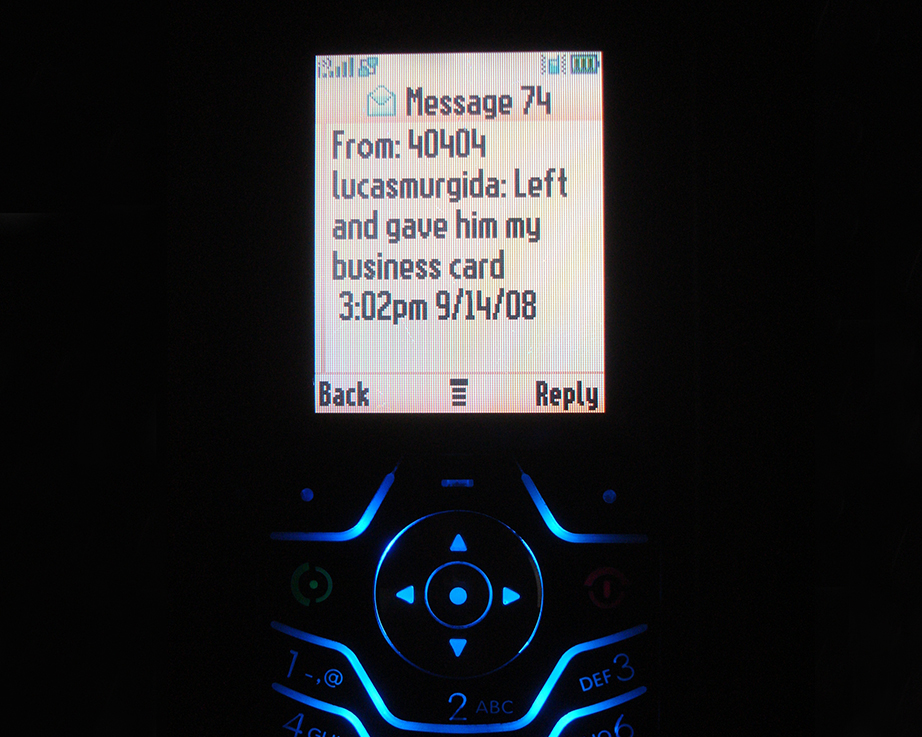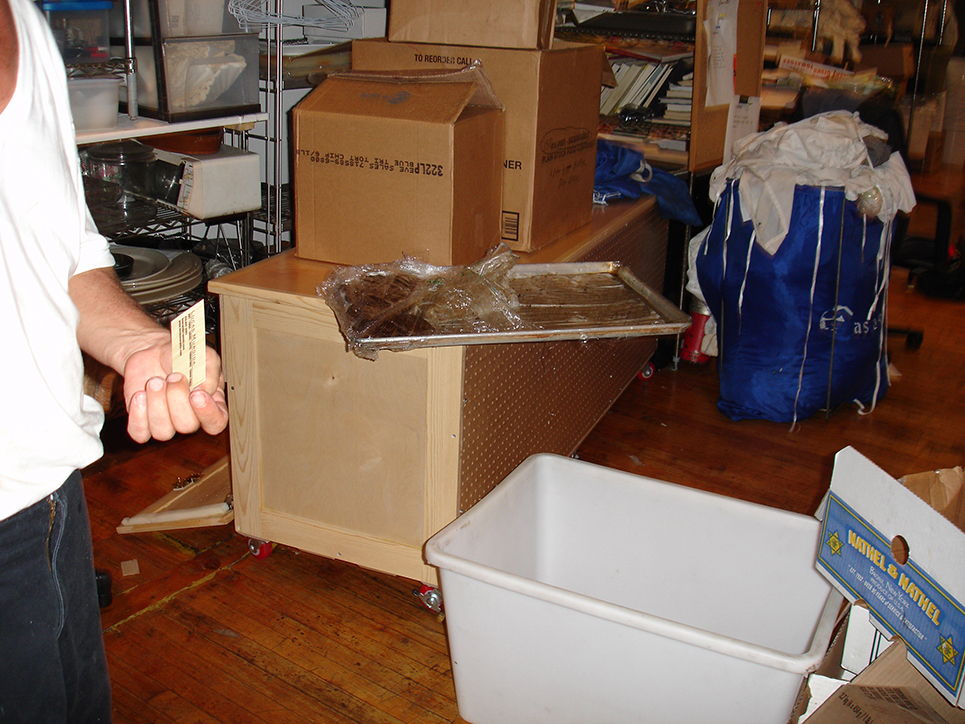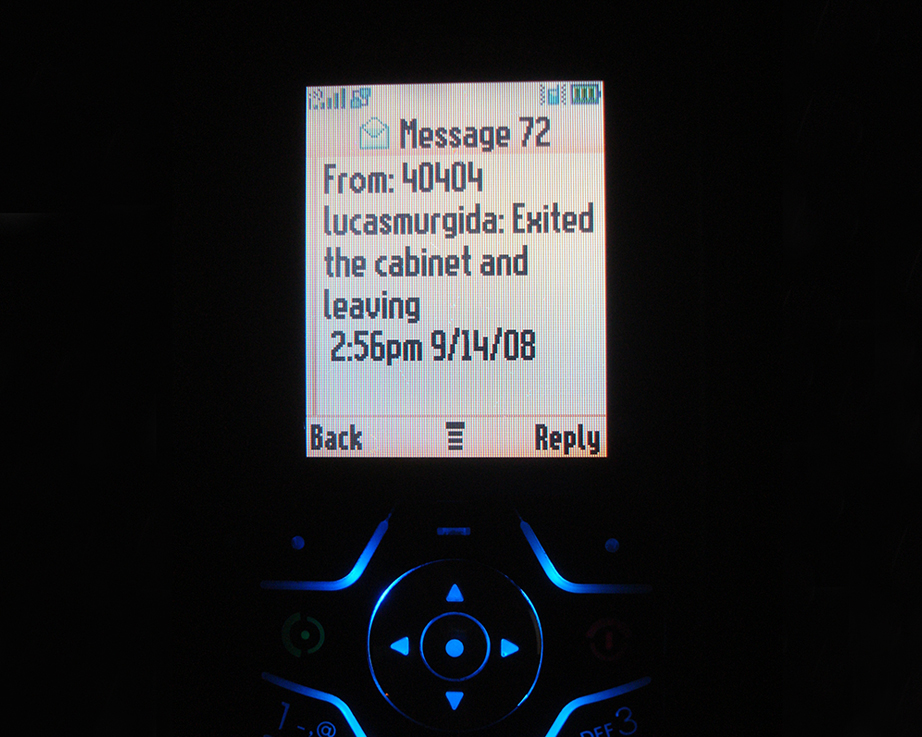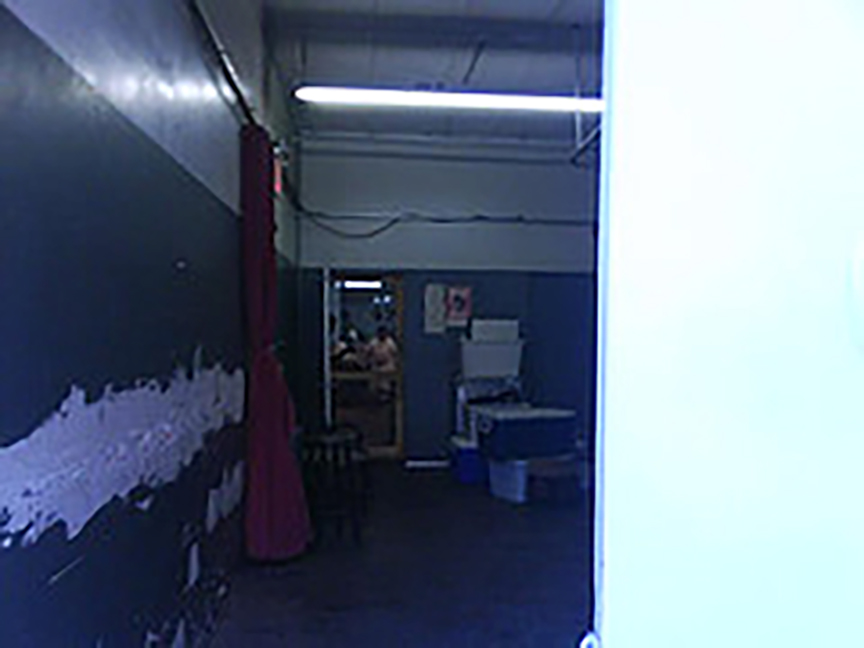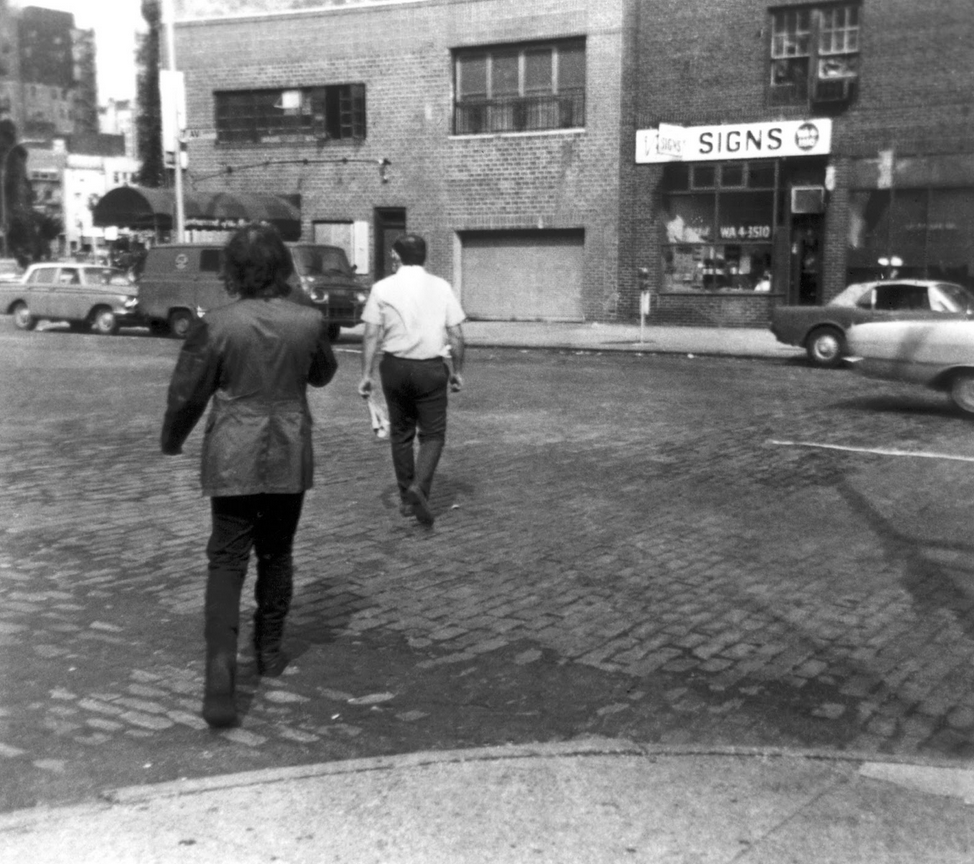9/10: Day #2, New York City, September, 2008
A cabinet will be constructed and left on a sidewalk. I will be hidden inside and not reveal myself until someone assumes possession and brings the cabinet from the public space to a private space. To read in detail about this experience please follow this link to my blog: http://lucasmurgida.blogspot.com/2008/ and also the Twitter feed that I was updating during the experience: https://twitter.com/lucasmurgida. As with the other pieces in the Yoga Teacher Series, in this project I am examining one of the five senses. 9/10 revolves around our sense of sight and perception.
Often the city seems to be ours alone to experience and we assume that it is in turn ours for the taking. This sensibility is made evident in the U.S. by the often-quoted phrase, “Possession is 9/10 of the law.” This means that the person who is not in possession of an item must prove that it is rightfully theirs. As each of us navigates the city we perceive the occurrences that we come into contact with to be unique to ourselves. This seems rational as each person observes events from a specific vantage point. These observations become confused by the witness because s/he interprets those public experiences through the filter of the their personal histories. For example, one person sees an event to be a hostile confrontation while another will see it is a playful exchange. As we experience the city we lay claim to our interpretations and often make the assumption that things are as they appear to us to be. The burden of proof then rests upon another to prove that this is not so. Nowhere is this more evident than when something that may be private property is placed in a public space. A person is not sure how to look at the object at first, but will usually fall back on the golden rule of U.S. culture (finders keepers, losers weepers) and claim it to be theirs. I am hoping to subvert the “finders” personal space by claiming it to be my own public space. As with the other pieces in the Yoga Teacher Series, in this project I am examining one of the five sense. 9/10 revolves around our sense of sight.
This outdoor intervention will be in place west of the Center for Architecture and south of Washington Square Park in New York City on Saturday, September 13th, from noon onward as part of The Conflux Festival.
Follow this address to learn more about the festival: www.confluxfestival.org/conflux2008/910/
Notes from Day #2:
On 09/14/08, I put myself on a different street that seemed to be quieter and more residential. It was extremely humid in Manhattan and there was very little wind. I was calmer and less scared than I had been the previous day. Though I over heard many conversations, most people decided not to take the cabinet because the bottom drawers were locked or because it was too heavy. After about 3 hours someone started opening and closing the drawers, moving the cabinet back in forth, and examining it. This went on for quite some time and eventually someone asked this person a question in regards to the cabinet. This is how I found out about my examiner. She told the other person that she was thinking about taking the cabinet and that she lived on the east side of the park. To hear her talk was comforting and it calmed me down. After a while she began to roll the cabinet by herself. Because the cabinet is long, heavy and the wheels swivel it is almost impossible to roll by oneself. She was unable to make it more than a block and then stopped. It was quite it for a while and I wasn’t sure what was happening. A few minutes later I heard a different woman and two men speaking in Spanish near the cabinet. It was hard for me to hear what they were saying but it boiled down to, “This is nice! Should we take? Sure, why not!” and in less than a minute I was being rolled quickly down the sidewalk. We moved for about five minutes before we came to stop. I was then lifted and rolled up and incline. I couldn’t tell where I was and I was scared that I had been rolled into the back of a box truck. After a few minutes I was pushed to the side and I heard a new voice from someone that was speaking both Spanish and English. He told the others to push it against the wall and to wait until the boss came back. He also said that they could drill a big hole in each of the bottom locks to get them open. This sent me into a panic as I didn’t want shards of metal and drill bits being projected into the cabinet. Luckily they didn’t have the tools to do it. The Spanish speakers then left and it was relatively quiet. I calmed down and started to figure out where I was. By looking through the holes in the back of the cabinet I could see boxes and kitchen supplies. I had been rolled into the storage room of a restaurant. All this time I was taking pictures and texting messages to my blog. I stayed in the cabinet for about a half and hour and it was clear that there was only one person working in the back. I opened the door to the cabinet and poked my head out. I was facing a set of storage shelves that had chopsticks and other assorted kitchen supplies. I heard someone coming so I closed the door quickly. After it had been quite for a while I poked my head out again and pushed cabinet far enough away from the shelves so the door could be opened fully. I then pulled myself out far enough to scan the kitchen. There was one man working and organizing in the space. I could also see two doors behind me. One was the way back to the street (I presumed). I pulled myself back into the cabinet, locked the door and considered my options. As previously mentioned it was hot, at least in the upper 80’s and very humid. I felt at least 10 degrees hotter in the kitchen and realized that I shouldn’t stay in the box for too much longer. I had been successfully moved from a public space to a private space without anyone realizing it, which had been my intention. Having realized this I decided to get out. I unlocked the door, poked my head out and surveyed the scene. I saw the chef and he was working in one of the walk in coolers. I pulled myself back in and got my things ready. I turned on my camera and slowly pulled myself out of the cabinet and began to take pictures while crouching behind the cabinet. I then turned and saw the two doors, one of which would lead back to the street (though I didn’t know which one). I hurried towards the one to the right and entered an office. The door to the street was locked. I turned around and chef walked into the room. He was quite shocked and asked me what I was doing, why I was taking pictures and how I had gotten in. I told him that I was lost and was looking for the way out. He asked again how I got in and I told him that I was in the box. He asked which box I was referring to and I pointed to the cabinet. I then explained that I was an artist and that I had hidden myself in the cabinet and that I wasn’t going to exit that cabinet until someone took me off the side walk and brought me into a private space. He saw the secret compartment and I showed him that I wasn’t stealing anything. I gave him my business card and he told me that it was a rather hot day to be doing something like this, to which I agreed. He offered me a glass of water and I declined. He asked what was going to happen to cabinet and I told him that it no longer belonged to me but to whoever took it off the street. This surprised him. I told him that I needed to go and asked if I could take a couple more pictures of the kitchen and he agreed. I then exited out of the door to the left and tried to gather myself together. I was in the cabinet for about 4 hours that day and 5 hours the previous day. Despite the fact that I was really hoping to leave the space that I was brought into without anyone seeing me, I am still pleased with the outcome and happy that nothing bad happened.
I would like to thank everyone that monitored my progress, wrote me during the experience and was concerned for my safety. Your thoughts and well wishes were infinitely helpful. More information about this project below:
Notes on 9/10:
This piece began as an unofficial “part two” of Vito Acconci’s intense critique of private space, Following Piece (1969), in which he followed people from public spaces until they went into private spaces, all while being tailed by a photographic documentor. Unlike Acconci –who followed people without their knowledge or consent– I allowed people to let me follow them. They gave me unknown permission to do so, which was facilitated by their assumptions and by the unofficial rules that govern the shared use of public space in the United States.
My interest in this topic began many years ago –before I knew anything about locks, yoga, power-politics, or BDSM– when I read the book The Poetics of Space (1958) by Gaston Bachelard. In its pages, I dove deep into all the things I found magical about furniture, cabinets, corners, and cellars. As Bachelard asserts in the book, these are the spaces in which a child first learns to dream. The book was very inspiring and it is still something I skim through every so often when I want to dream. In the book’s introduction, Bachelard talks about a type of psychoanalytical investigation in which, “…we are able to isolate a sphere of pure sublimation; of a sublimation which sublimates nothing, which is relieved of the burden of passion, and freed from the pressure of desire.” I didn’t understand the quote at the time, but I kept thinking about it. Years later, while I was trying to help people during locksmithing jobs, it kept popping into my head as I’d be physically kneeling on the ground trying to open locks for customers who –while standing above me– were mentally incapable of creating a sensation of security when denied access to the spaces that escorted them to those feelings. In a simple sense, they were high above me and I was beneath them on the ground. The physicality of my body in relation to the people that I was paid to help became crucial in the development of almost all of my artistic viewer interactions. I realized that simply moving a body through a public space was deeply political.
In 9/10, I assumed the most submissive position I possibly could because I could not control where the cabinet was pushed once a person decided that they wanted it. After all, in the United States, if something is left unguarded and unclaimed in public then it is considered up for grabs. However, despite the apparent submissive position that I assumed and the apparent “abandoned” appearance of the cabinet, it was still “occupied” and I was still in charge. The people who decided to take the cabinet had no idea that I was in there nor did they know what my intentions were. This docile consent allowed me to assume a position that was so vulnerable that I usurped power back to myself. I chose to be out of control on my own terms, as opposed to submitting to someone else’s needs or desires. For me, this was a radical exploration of “topping from the bottom,” or in Bachelard’s words, I was able to sublimate while sublimating nothing.
